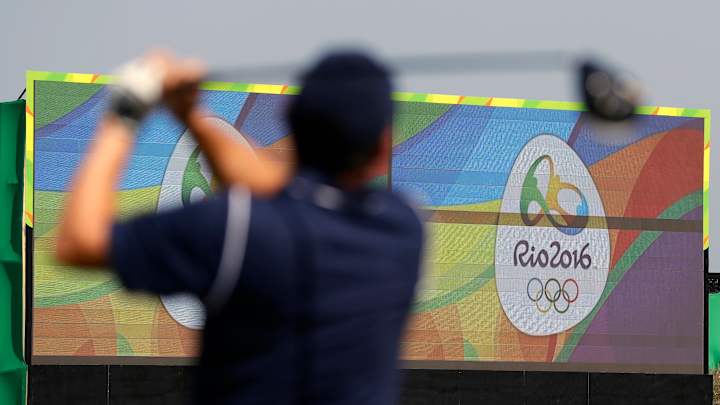Brazil's golf history would fit on back of a scorecard

RIO DE JANEIRO (AP) The history of golf in Brazil would fit on the back of a scorecard.
It begins at the turn of the 20th century, when English and Scottish railway engineers convinced some Benedictine monks to set aside a parcel of land for the game on a monastery near Sao Paulo. A lot of people would argue it nearly ended there, too, soon superseded in Brazil's sporting hierarchy by another wildly popular Scottish import of the era called ''futbol.''
Golf remains a niche sport here, played largely by the rich. But the hope is that the game's return at these Olympics could spark a boom, not unlike the way a swashbuckling young American named Arnold Palmer convinced his countrymen to pick up a club and give golf a go in the 1960s.
''What's happening here, we hope, will be like what happened in the states 60 years ago,'' said Nico Barcellos, who played a dozen years on Latin America's modest pro golf circuit and Brazil's Olympic golf team leader, as well as the head of the national federation. ''We're 60 years behind, but we're working on it.''
To call that a daunting task, given the current state of the economy, doesn't tell the half of it.
With a population of 200 million, Brazil has exactly one player, Lucas Lee, currently on the PGA Tour. It's nearly 300 times larger than North Dakota, but they have the same number of golf courses - about 125. Despite the just-completed Olympic Golf Course on the city west side, there's no chance to close the gap soon. The country has to import everything from clubs and balls to earthmovers and riding mowers.
They don't even have that staple of the 19th hole - golf jokes.
''Give me a second,'' Barcellos chuckled. ''Maybe I can come up with one.''
But that hasn't dissuaded him from trying to grow the game. The Brazilian federation recently trained 50,000 physical education teachers as part of a ''Golf Para Vida (Golf for Life)'' campaign to familiarize schoolkids with the game and says 100 youngsters will be out on the Olympic course every day after the Rio Games end.
While he'd like to discover another golfer or two like current Brazilian women's team member Victoria Lovelady, both of them know it won't be easy.
''In my generation, your family had to be part of the game,'' the 29-year-old Rio de Janeiro native said. ''The hope is this is a big step in making golf more accessible to all.''
Her great-grandfather was a founding member of Itanhanga, one of three courses in the Rio metropolitan area. But after playing the Orange Bowl tournament, a premier junior event in Miami, she moved in with a relative in the United States to raise the level of her game. After attending USC on a golf scholarship, and attempting to lock up a spot on the pro tour, like Barcellos, she views these Olympics as a chance to give something back.
Asked what it would take to impress her countrymen, she laughed.
''Maybe that we can hit the ball over 200 meters, or more than two soccer fields,'' she paused, ''something Brazilian fans can relate to. And it's probably the first time that many of them will see something like that.''
Justin Rose, one of the best-known men's golfers to actually show up, had a shorter answer to the same question.
''Lots of birdies,'' the Englishman began.
A moment later, he added, ''But it won't hurt if one of the Brazilians gets into a close battle coming down the stretch on the final day. Competition like that always translates well.''
Whether the locals tune in when men's play begins Thursday is anyone's guess.
The course is designed like a traditional links, flat and treeless, tucked behind a highway lined with car dealerships.
The grandstand alongside the 18th green is about the size of the one used for the RSM Classic on Sea Island, Georgia, a modest PGA Tour event in November that closes out the season. Looming nearby are a handful of completed and still-under-construction condominium towers that are part of the same project, a reminder that building a golf course in Brazil remains heavily dependent on the state of Brazil's economy.
But that isn't Barcellos' only concern.
PGA Tour pro K.J. Choi, who is Korea's team leader, played a round at Olympic and described it this way: ''Many waters ... wind very important ... good for iron play.''
When that description is relayed to Barcellos, he looks off in the distance.
''I think this course will be the biggest legacy of these games.
''But I worry sometimes it's too hard,'' he said finally, ''and that a player will hit three slices off the first tee, lose all three balls and ask for a taxi to go home.''
